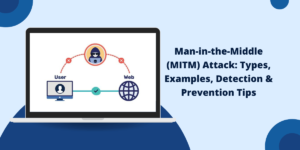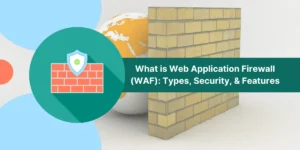What is XML External Entity (XXE) Injection?
The processing of XML input containing external entity references by applications without proper validation leads to XML External Entity injection. Attackers can use this vulnerability to access local files while performing server-side request forgery (SSRF) and port scanning and potentially execute remote code.
The XML specification allows external entities which reference both local and remote resources thus creating the potential for XXE vulnerabilities. Malicious exploitation becomes possible through XML parsers when they process entities without sufficient security controls.
The Growing Threat Landscape
Security professionals worldwide remain concerned about the widespread nature of XXE vulnerabilities. Security research indicates that XXE injection stands among the top 10 web application security risks which poses substantial threats to organizations in all industries.
XML External Entity (XXE) injection represents one of the most critical security vulnerabilities in modern web applications. As organizations increasingly rely on XML processing for data exchange, understanding and preventing XXE attacks has become essential for maintaining robust cybersecurity defenses.
Industry Impact Statistics
|
Sector |
Vulnerability Prevalence |
Average Remediation Time |
|
Financial Services |
34% |
45 days |
|
Healthcare |
41% |
52 days |
|
E-commerce |
38% |
40 days |
|
Government |
29% |
60 days |
|
Technology |
42% |
35 days |
These statistics highlight the widespread nature of XXE vulnerabilities and the urgent need for comprehensive prevention strategies.
Common XXE Attack Vectors
Organizations need to understand XXE attack mechanisms to establish proper defensive strategies. The exploitation of XXE vulnerabilities occurs through multiple standard attack vectors.
- File Disclosure Attacks: Attackers use File Disclosure Attacks to access local system files through malicious XML entities which reveal sensitive information including configuration files and password files and application source code.
- Server-Side Request Forgery (SSRF): The creation of external entities through SSRF enables attackers to send requests to internal network resources which may reveal internal services and conduct internal infrastructure reconnaissance.
- Denial of Service (DoS): Attackers use recursive entity definitions and reference extremely large files to perform Denial of Service (DoS) attacks which consume excessive system resources and make systems unavailable.
- Port Scanning and Network Reconnaissance: The exploitation of XXE allows attackers to scan internal network infrastructure for open ports and available services.
Real-World Impact and Case Studies
The security risks of XXE vulnerabilities create actual damage that goes beyond theoretical security threats. Organizations from different sectors have encountered major breaches because of XXE exploitation.
Notable XXE Incidents
- Case Study 1: Financial Institution Data Breach: A major financial institution learned that attackers used an XXE vulnerability in their customer portal to obtain internal configuration files containing database credentials. The security breach revealed important customer financial information which led to regulatory penalties reaching more than $2.5 million.
- Case Study 2: Healthcare System Compromise: The healthcare network experienced an XXE attack which enabled unauthorized system access to patient management systems through internal network reconnaissance. The security incident compromised more than 100,000 patient records while necessitating complete system recovery.
- Case Study 3: E-commerce Platform Exploitation: The online retail platform became vulnerable to an XXE attack which revealed payment processing configurations thus forcing the platform to suspend services and causing major revenue losses during peak shopping seasons.
Technical Risk Assessment
Organizations need to grasp the technical aspects of XXE vulnerabilities to develop suitable risk reduction measures.
Risk Severity Matrix
|
Impact Level |
Likelihood |
Risk Score |
Priority |
|
Critical |
High |
9.0 |
Immediate |
|
High |
Medium |
7.5 |
Urgent |
|
Medium |
Low |
5.0 |
Planned |
|
Low |
Very Low |
2.5 |
Monitor |
Vulnerability Assessment Factors
- Application Architecture: The risk of XXE attacks increases in applications that perform complex XML processing workflows especially when these applications use multiple third-party systems or accept user-supplied XML content.
- Parser Configuration: The default XML parser configurations allow external entity processing which creates security vulnerabilities unless users explicitly disable this feature.
- Input Validation:Applications that fail to validate their inputs properly and sanitize them become more vulnerable to XXE exploitation when they accept XML from untrusted sources.
- Network Architecture: Internal network segmentation combined with access controls helps reduce XXE attack impact but flat network architectures increase the potential damage.
Best Practices to Prevent XML External Entity (XXE) Injection
Multiple security controls need to be implemented throughout application development and deployment and operational phases to achieve effective XXE prevention.
Primary Prevention Measures
- Disable External Entity Processing: The most secure method to prevent XXE attacks requires disabling external entity processing in XML parsers. Modern XML libraries include settings which enable users to disable external entity processing.
- Input Validation and Sanitization: The system should validate all inputs thoroughly to detect and reject any suspicious XML content before processing. The system must check for external entity declarations together with suspicious entity references.
- XML Schema Validation: The system should validate XML documents against schemas to ensure they match expected formats before accepting them.
- Parser Security Configuration: XML parsers should be configured with security-first settings which include disabling document type definitions (DTD) processing when it is not required.
Implementation Guidelines by Technology Stack
| Technology | Prevention Method | Configuration Example |
| Java (JAXP) | Disable External Entities | factory.setFeature(“http://apache.org/xml/features/disallow-doctype-decl”, true) |
| .NET | Secure Parser Settings | XmlReaderSettings.DtdProcessing = DtdProcessing.Prohibit |
| PHP | Disable Entity Loading | libxml_disable_entity_loader(true) |
| Python | Safe Parser Usage | Use defusedxml library instead of standard XML libraries |
| Node.js | Secure Configuration | Configure parsers with noent: true, nonet: true |
Advanced Security Measures
- Content Security Policies should be implemented to prevent unauthorized resource access and to limit XML processing capabilities.
- Network Segmentation should be deployed to isolate XML processing systems from sensitive internal resources to limit potential XXE attack impact.
- Comprehensive logging and monitoring should be implemented to detect potential XXE attack attempts, including unusual file access patterns and network requests.
- XXE vulnerability testing should be integrated into continuous integration and deployment pipelines to ensure that new code changes do not introduce XXE risks.
Development Best Practices
The establishment of secure development practices serves as the base for preventing XXE attacks. Organizations need to include security elements in all phases of software development.
Secure Coding Guidelines
- XML processing components need to operate with the smallest set of permissions which restricts damage from successful XXE exploitation.
- The security posture remains intact when any single control fails because organizations implement multiple security layers.
- Security-first default settings should be enabled in systems and applications which require explicit user actions to activate dangerous functionality.
- Security assessments together with code reviews should be performed on a regular basis to detect and fix potential XXE vulnerabilities before deployment.
Code Review Checklist
Security teams together with developers need to use detailed checklists to detect XXE vulnerabilities throughout code review procedures.
- The code review process must verify that all XML parsers have external entity processing disabled.
- The validation process needs to include specific checks for XXE vulnerabilities.
- The use of XML schemas should be implemented for content validation purposes.
- The review process should examine error handling mechanisms to stop information disclosure.
- The system should record all security-related events for proper validation.
Testing and Validation
Organizations can prevent malicious actors from exploiting XXE vulnerabilities through complete testing strategies which identify and fix these vulnerabilities.
Automated Security Testing
- The implementation of SAST tools enables developers to detect potential XXE vulnerabilities in source code during early development stages.
- DAST tools test operational applications to detect XXE vulnerabilities by running simulated real-world attack scenarios.
- The deployment of IAST solutions enables organizations to achieve complete vulnerability detection through the combination of static and dynamic testing methods.
Manual Testing Approaches
- Penetration testing should be performed on XXE vulnerabilities through a combination of automated tools and manual testing methods.
- Code Review: Perform thorough manual code reviews to identify subtle XXE vulnerabilities that automated tools might miss.
- The proper configuration of XML parser settings and security parameters should be reviewed on a regular basis to maintain XXE prevention measures.
Incident Response and Recovery
Organizations need to develop detailed incident response plans that focus on XXE vulnerability exploitation.
Immediate Response Actions
- The first step in incident response should be system isolation to stop further damage and contain the security incident.
- The team should conduct a rapid evaluation of XXE exploitation to determine its extent and identify all affected data and systems.
- The team must inform all necessary stakeholders about the incident including security personnel and management and regulatory bodies if required.
- Evidence Preservation: Preserve forensic evidence for investigation and potential legal proceedings.
Recovery and Remediation
- The organization should immediately deploy patches or configuration modifications to eliminate the XXE vulnerability.
- The restoration process of affected systems should use clean backups to eliminate any potential malicious modifications.
- The organization should enhance its security measures to stop future incidents by implementing better monitoring and detection systems.
- The organization should perform complete post-incident assessments to discover better processes and stop future incidents from happening.
Regulatory and Compliance Considerations
Organizations in highly regulated industries face major regulatory consequences when XXE vulnerabilities occur.
Compliance Framework Requirements
|
Framework |
XXE-Related Requirements |
Compliance Impact |
|
Secure coding practices, vulnerability management |
Payment processing compliance |
|
|
HIPAA |
Technical safeguards, access controls |
Healthcare data protection |
|
GDPR |
Security by design, data protection |
Personal data processing |
|
SOX |
Internal controls, security assessments |
Financial reporting integrity |
|
ISO 27001 |
Information security management |
Comprehensive security framework |
Documentation and Reporting
Organizations need to keep detailed records of their XXE prevention strategies through security policies and configuration standards and incident response procedures. The compliance audits need to check XXE vulnerability management practices on a regular basis.
Future Considerations and Emerging Trends
The cybersecurity environment keeps changing because new XXE attack methods and defensive technologies appear frequently.
Emerging Threats
- Artificial intelligence tools help attackers discover and exploit XXE vulnerabilities across multiple systems which demands advanced defensive systems.
- Cloud-Native Exploitation: The transition of organizations to cloud platforms has led to the development of new XXE attack vectors which target cloud-specific XML processing services.
- The growth of Internet of Things devices and edge computing systems creates new XXE risk vectors that were not previously considered.
Technological Advances
- The new XML parsing technologies contain security features that stop XXE vulnerabilities automatically.
- Security tools now employ machine learning algorithms to identify complex XXE attack attempts which traditional signature-based systems cannot detect.
- The use of containerization technologies enables the creation of isolated XML processing components which reduce the impact of XXE attacks.
Final Thoughts
XML External Entity injection continues to be a fundamental security vulnerability which needs complete prevention measures. Organizations need to establish multiple security controls which include secure parser configuration and input validation and network segmentation and continuous monitoring.
The prevention of XXE attacks requires organizations to adopt a security-first approach to XML processing while implementing secure coding practices and maintaining continuous monitoring for potential exploitation attempts. Organizations need to maintain awareness about new XXE attack methods while they update their defensive systems.
The guide provides complete prevention strategies which organizations can use to minimize their XXE risk exposure while building strong cybersecurity defenses against this ongoing threat. Organizations need to dedicate continuous attention to XXE prevention because it requires ongoing improvement to defend against evolving attack methods.
Security assessments performed regularly together with employee training and following current security best practices help organizations maintain effective XXE prevention measures which stay aligned with current threat intelligence. Organizations that invest in complete XXE prevention measures achieve better security outcomes through fewer incidents and preserved customer trust and regulatory compliance.
FAQs about XML External Entity (XXE) Injection
What is XML External Entity (XXE) injection?
XML External Entity injection is a security vulnerability that occurs when attackers exploit XML parsers. The attacker inserts malicious external entities into XML documents to access unauthorized files or execute harmful code. This vulnerability affects applications that process XML data.
How does XXE injection work?
XXE injection works by exploiting XML parsers that allow external entity references. Attackers insert malicious DOCTYPE declarations to reference external files or systems. The parser processes these declarations and grants access to sensitive data or system resources.
What are the main risks of XXE attacks?
XXE attacks can lead to data theft, server-side file disclosure, and denial of service. Attackers can access sensitive files like passwords and configuration data. These attacks may also cause server crashes through resource consumption or infinite loops.
How can developers prevent XXE injection attacks?
Developers should disable external entity processing in XML parsers. Applications must use updated XML processors and disable DTD processing. Input validation and XML schema validation help prevent malicious XML content.
Which programming languages are vulnerable to XXE attacks?
Java, PHP, Python, and .NET applications process XML data and face XXE risks. These languages use XML parsers that enable external entity processing by default. Developers must configure security settings for each language’s XML processing components.
What are common signs of an XXE attack?
Signs include unexpected server errors during XML processing. Applications may show unusual delays or timeouts. System logs might show unauthorized file access attempts. Network monitors may detect outbound connections to external systems.

Priya Mervana
 Verified Web Security Experts
Verified Web Security Experts
Priya Mervana is working at SSLInsights.com as a web security expert with over 10 years of experience writing about encryption, SSL certificates, and online privacy. She aims to make complex security topics easily understandable for everyday internet users.



